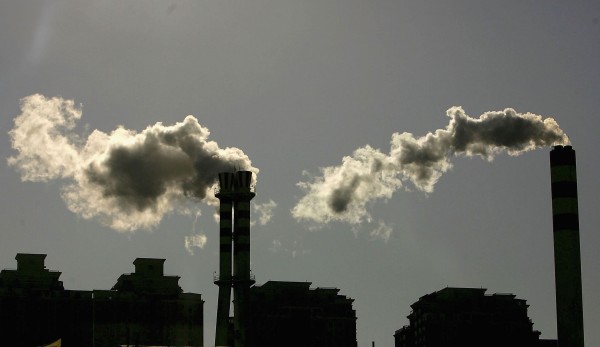Scientists identify five major health threats in China
| Staff Reporter | | Apr 16, 2013 06:37 PM EDT |

Unhealthy diet, uncontrolled high blood pressure, environmental tobacco smoke or second-hand smoke, and outdoor and indoor air pollution have been identified as the five leading health risks facing the Chinese population.
Like Us on Facebook
And these threats are particularly serious in China compared to most of the G20 countries, said a statement issued at opening ceremony of the Evidence-Based Policy Dialogue: China and the Global Burden of Diseases symposium on Monday.
Of the five leading health risks, Chinese and international medical experts paid particular attention to second-hand smoke and air pollution as high risks because these can trigger infectious diseases, cardiovascular disorders and cancers.
"The prevalence of these diseases in China is rising," the statement said.
Collaborative Study
The statement was based on the new findings of a collaborative study conducted by the Chinese center for Disease Control and Prevention (China CDC), Peking Union Medical College (PUMC), the Institute for Health Metrics and Evaluation (IHME) at the University of Washington and Australia's Queensland University.
The collaborative study spanned two decades from 1990 to 2010 and tracked disease-, disability- and demographic-related health trends in China.
During last Monday's symposium, experts said China should make efforts in combating non-communicable diseases that has grown due to air pollution.
The experts said that while China has achieved marked success in improving life expectancy and reducing death and illness caused by infectious disease, the challenge of non-communicable diseases has grown, as has the number of years Chinese people live affected by chronic disease and disability.
They also noted that the public's attention are now drawn into the spread of infectious diseases such as SARS and the current H7N9 bird flu, yet the biggest disease burden for Chinese people actually comes from the mounting threat of non-communicable and chronic diseases.
"China still has a long way to go in terms of information-collecting measures and the prevention and control of the inducing factors of non-infectious and chronic diseases, said PUMC Professor Liu Yuanli.
Air Pollutants on the Rise
The experts concern on China's air pollution as a major health threat came at a time that authorities in Beijing announced that levels of two major air pollutants increase by almost 30 percent in the Chinese capital in the first three months of this year.
Beijing Municipal Environmental Protection Bureau head Chen Tian was quoted as saying that he pollutants - nitrogen dioxide and particulate matter that is between 2.5 and 10 micrometers in diameter, called PM 10 - appeared to have surged sharply in January, showing levels 47 percent higher than the same month last year.
Cities in northern China have been grappling this winter with record levels of air pollution, which have stirred fear and anger among many Chinese. The clamor for clean air prompted city governments to impose regulations and shut down factories that produced heavy pollution.
Last February, Beijing proposed a regulation that would impose 500 yuan fine on anyone caught barbecuing food on the side of the road when smog reaches dangerous level. The proposed regulation also seeks to penalized with a US$482 fine drivers of vehicles that exceed emission limits The draft regulation was posted on the Beijing government's website.
©2015 Chinatopix All rights reserved. Do not reproduce without permission
EDITOR'S PICKS
-

Did the Trump administration just announce plans for a trade war with ‘hostile’ China and Russia?
-

US Senate passes Taiwan travel bill slammed by China
-

As Yan Sihong’s family grieves, here are other Chinese students who went missing abroad. Some have never been found
-

Beijing blasts Western critics who ‘smear China’ with the term sharp power
-

China Envoy Seeks to Defuse Tensions With U.S. as a Trade War Brews
-

Singapore's Deputy PM Provides Bitcoin Vote of Confidence Amid China's Blanket Bans
-

China warns investors over risks in overseas virtual currency trading
-

Chinese government most trustworthy: survey
-

Kashima Antlers On Course For Back-To-Back Titles
MOST POPULAR
LATEST NEWS
Zhou Yongkang: China's Former Security Chief Sentenced to Life in Prison

China's former Chief of the Ministry of Public Security, Zhou Yongkang, has been given a life sentence after he was found guilty of abusing his office, bribery and deliberately ... Full Article
TRENDING STORY

China Pork Prices Expected to Stabilize As The Supplies Recover

Elephone P9000 Smartphone is now on Sale on Amazon India

There's a Big Chance Cliffhangers Won't Still Be Resolved When Grey's Anatomy Season 13 Returns

Supreme Court Ruled on Samsung vs Apple Dispute for Patent Infringement

Microsoft Surface Pro 5 Rumors and Release Date: What is the Latest?









